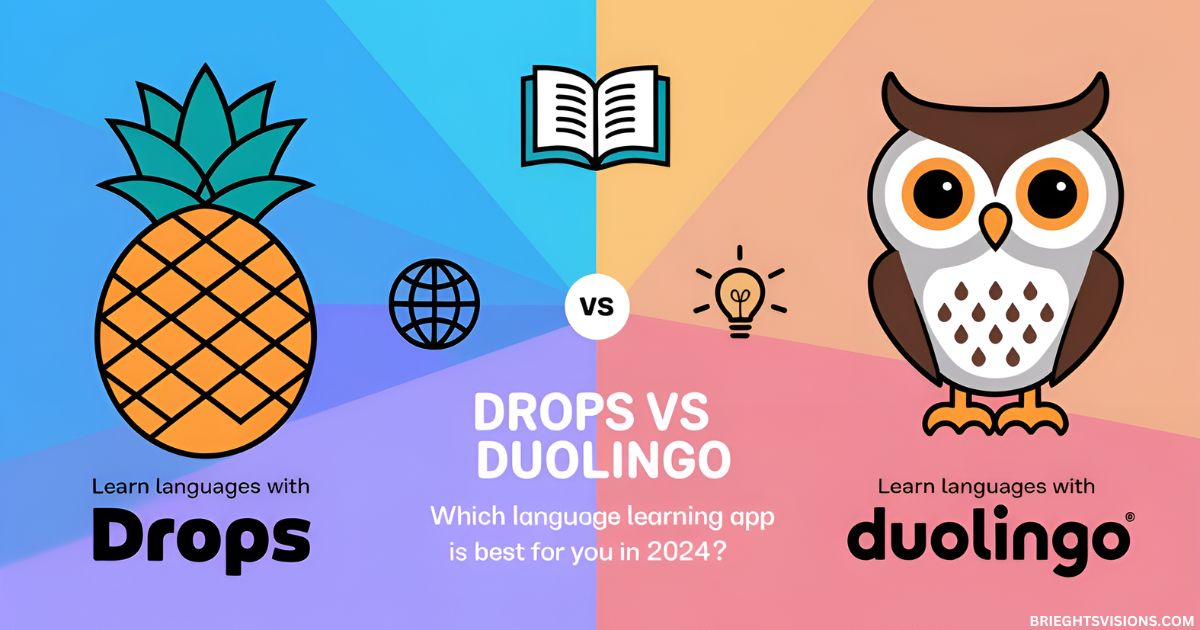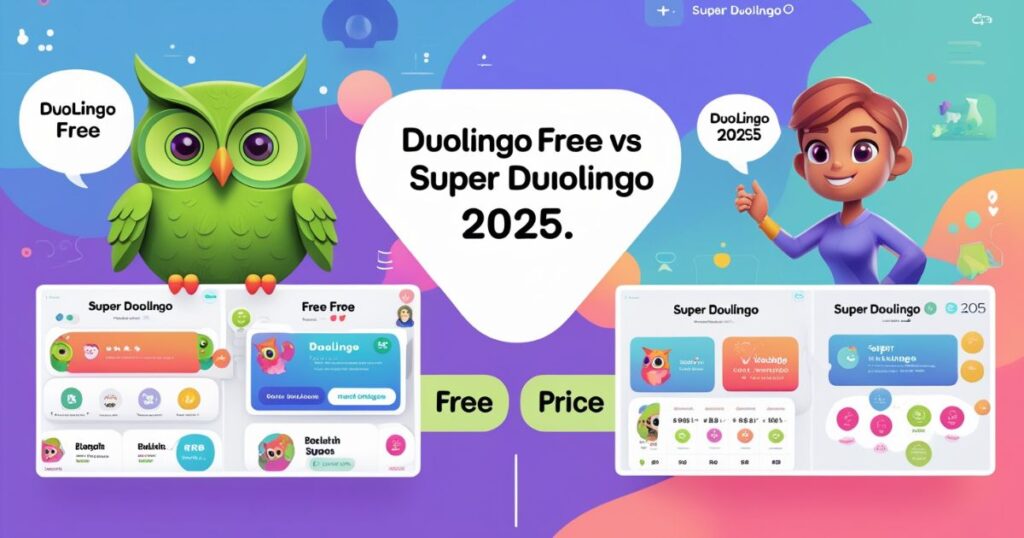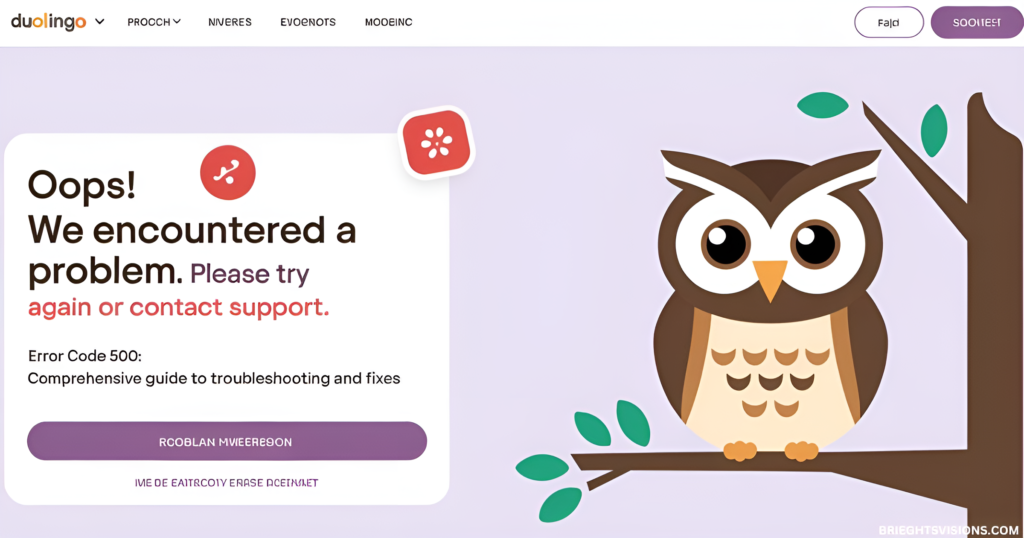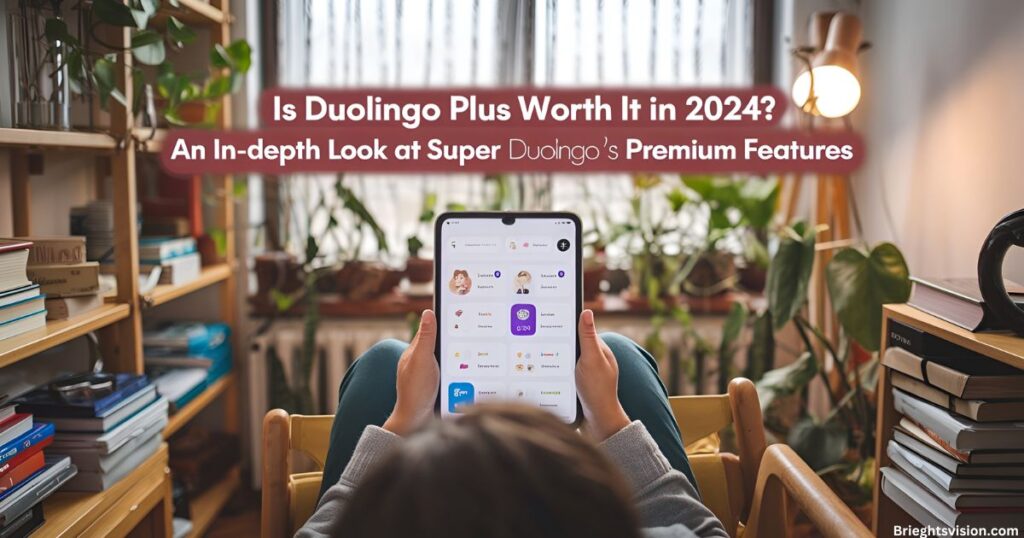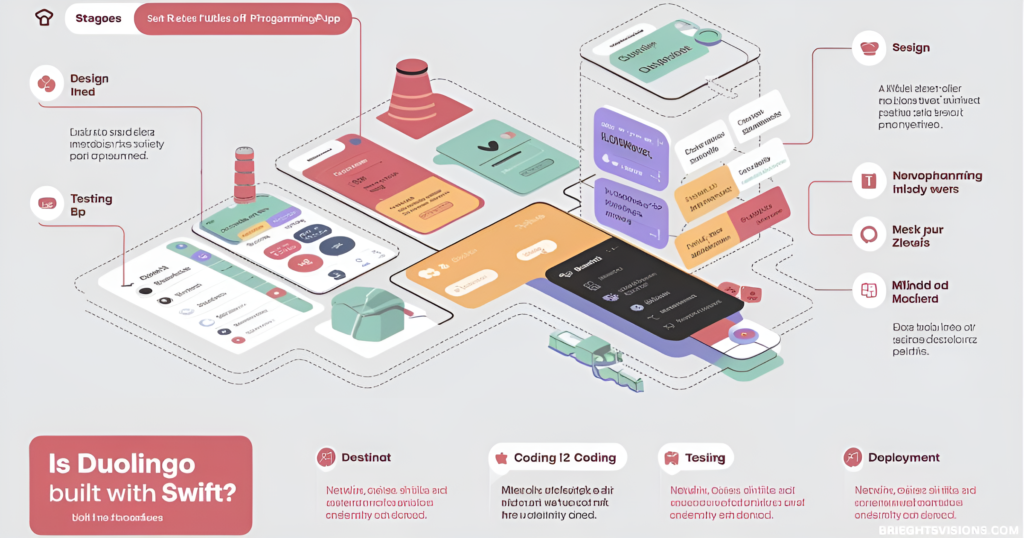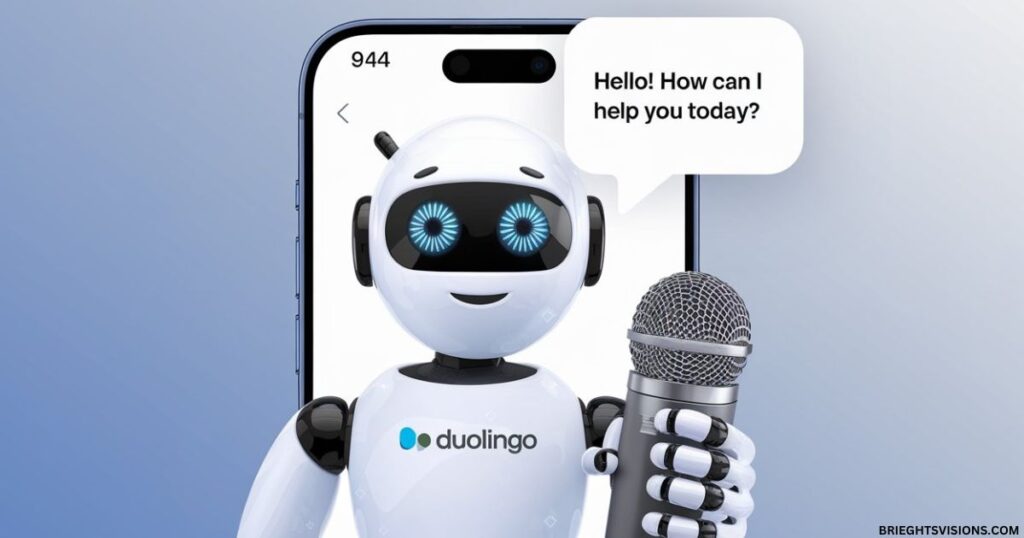Choosing the right language learning app in 2024 can shape your fluency journey. Drops and Duolingo are two top contenders, each offering unique benefits tailored to different learning styles. Drops focuses on visual learning with bite-sized sessions, ideal for building vocabulary. In contrast, Duolingo gamifies grammar and practice for a comprehensive approach.
From pricing and learning techniques to real-world results, understanding the strengths of Drops vs Duolingo is essential for finding your perfect fit. In this comprehensive guide, we’ll explore every facet of Drops vs Duolingo—from core features to pricing, learning methods, and real-world results—to help you make an informed decision.
Understanding the Basics of Drops and Duolingo
When comparing Drops vs Duolingo, it’s clear both apps cater to different learning styles. Duolingo, launched in 2012, takes a well-rounded approach by covering grammar, vocabulary, and conversation through gamified lessons. Its streaks, points, and rewards make learning interactive and addictive.
In contrast, Drops, launched in 2015, focuses solely on vocabulary building, offering visually appealing, bite-sized lessons that fit busy schedules. Duolingo’s strength lies in its comprehensive approach, ideal for beginners looking to understand a language holistically. Drops excels for learners who want to expand their vocabulary quickly and efficiently. Whether you prefer Duolingo’s engaging quizzes or Drops’ sleek visuals, both apps provide unique pathways to mastering a new language.
Key Features of Drops vs Duolingo
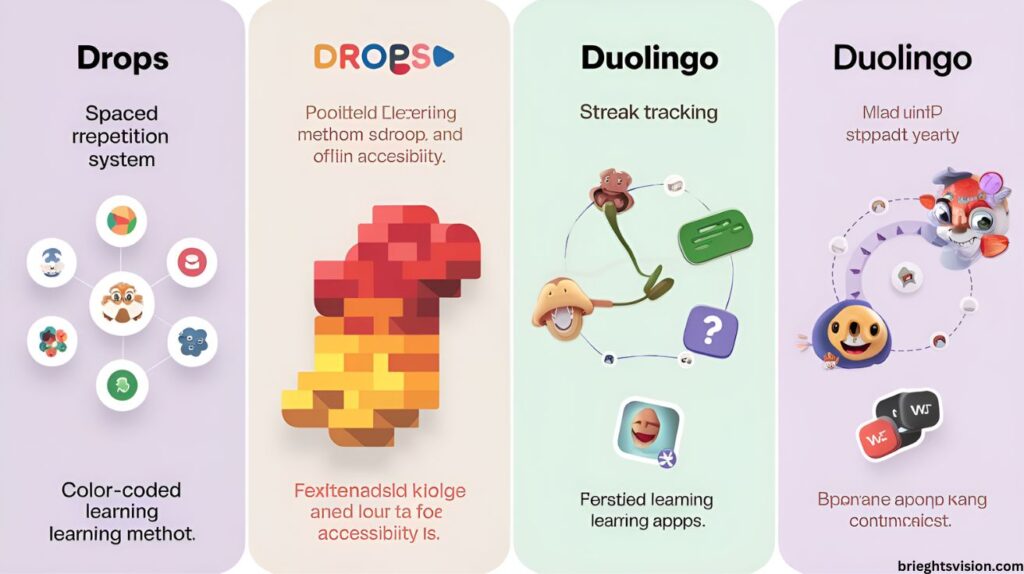
Duolingo provides a comprehensive language learning experience, covering grammar, speaking, listening, and writing. Its lessons progress in a structured sequence, introducing foundational concepts before advancing to complex material. This approach is ideal for beginners aiming to grasp sentence structure and conversational basics.
In contrast, Drops focuses on rapid vocabulary memorization using visual association. By skipping grammar entirely, Drops helps learners quickly build essential word banks. Lessons are categorized into themes like food, travel, and business, enabling users to target their specific learning goals. When comparing Drops vs Duolingo, the choice depends on your goals—whether you prefer holistic skill-building (Duolingo) or fast-tracked vocabulary retention (Drops). Both apps excel in distinct areas of language learning.
Language Options in Drops vs Duolingo
Both apps boast extensive language selections catering to diverse learners. Duolingo offers over 40 languages, including widely spoken options like Spanish, French, and Japanese, as well as unique choices like Klingon and High Valyrian. This makes it ideal for mainstream learners and pop culture enthusiasts.
Drops, however, goes further with access to 50+ languages, including regional and indigenous options. This broader range supports learners seeking rare or less common languages. For mainstream options, both apps provide robust resources. But if your focus is on learning regional or indigenous languages, Drops might be the better pick. Ultimately, your choice depends on your goals and the language you want to master!
Comparing Costs
Pricing is often a deciding factor when selecting a language learning app. Both Drops vs Duolingo operate on a freemium model, but their premium options differ significantly in cost and features. Duolingo’s free version is highly generous, granting access to all language courses and lessons, albeit with ads. Premium users pay $7.99 per month for an ad-free experience, offline lessons, and additional features like mistake reviews and unlimited practice attempts.
Drops offers a free version with a significant limitation: users can only practice for five minutes every 10 hours. For serious learners, this restriction often necessitates upgrading to the premium plan, which costs $13.00 per month or $69.99 annually. Drops also offers a lifetime subscription for $159.99, which is a one-time payment option that could be cost-effective for long-term use.
| Feature | Duolingo | Drops |
| Free Version | Full access with ads | 5 minutes every 10 hours |
| Monthly Premium | $7.99 | $13.00 |
| Yearly Premium | $95.88 | $69.99 |
| Lifetime Premium | No lifetime plan | $159.99 |
For budget-conscious learners, Duolingo offers more value in its free version. However, Drops’ lifetime plan may appeal to those planning to use the app long-term.
Learning Experience
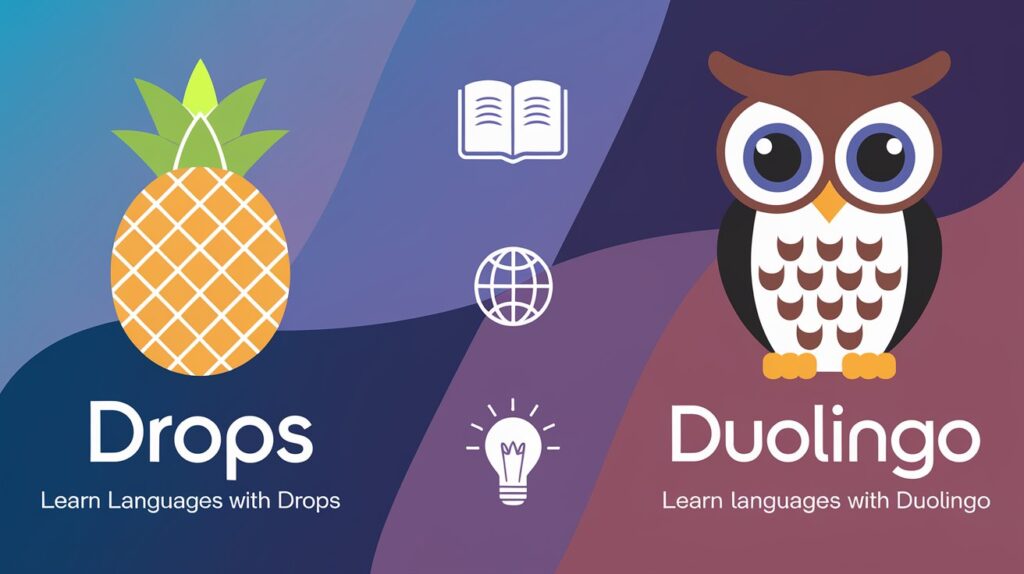
When it comes to language learning, Drops vs Duolingo offers contrasting approaches that cater to different learner preferences. Duolingo combines a comprehensive, gamified structure to keep users engaged, while Drops emphasizes a focused, visual experience for quick vocabulary retention. Both apps excel, but their methods appeal to distinct learning styles.
Duolingo: Comprehensive and Gamified
Duolingo stands out with its tree-based system, unlocking lessons step by step. Each lesson includes:
- Multiple-choice questions for comprehension.
- Speaking exercises to polish pronunciation.
- Writing tasks to build grammar skills.
Its gamification features—like streaks, XP points, and leaderboards—create an engaging, competitive environment. These tools boost motivation, making Duolingo especially attractive to beginners and casual learners.
With fun, interactive lessons, Duolingo transforms learning into a game. However, comparing Drops vs Duolingo, the former prioritizes vocabulary retention through visuals, while the latter focuses on a holistic approach to language. The choice depends on your goals—whether building vocab or mastering grammar and structure. Duolingo, with its diverse methods, excels for balanced learning.
Drops: Focused and Visual
Drops stands out with its unique visual learning approach, designed to emphasize rapid vocabulary acquisition. Lessons are intentionally short, lasting just five minutes, making them perfect for learners with busy schedules. The app features engaging activities such as picture-word matching, swipe-based exercises, and topic-based vocabulary drills, all aimed at creating a streamlined, efficient learning experience.
By focusing solely on vocabulary, Drops keeps its methods simple yet effective, catering to learners who thrive on a visually engaging approach. However, while its strengths lie in brevity and focus, Drops lacks the depth found in Duolingo, particularly in areas like grammar, sentence construction, and conversational skills. It’s ideal for quick vocabulary boosts but limited for comprehensive language mastery.
Vocabulary Retention Compared
Drops and Duolingo take different paths to boost vocabulary retention. Duolingo embeds words in sentences, providing context to aid understanding and frequent repetition for short-term recall. However, some users struggle with long-term retention without extra reinforcement.
In contrast, Drops relies on visual memory techniques, pairing words with unique illustrations, making it a great fit for visual learners. This approach often supports longer retention.
For quick vocabulary expansion, Drops excels, offering efficient memorization. Meanwhile, Duolingo’s contextual teaching suits learners aiming to grasp practical usage. Choosing between Drops vs Duolingo ultimately depends on whether you value rapid acquisition or deeper contextual understanding of vocabulary.
More Post: Duolingo Error Code 500: Comprehensive Guide to Troubleshooting and Fixes
More Post: Is Duolingo Built with Swift? A Deep Dive into Its App Development
Grammar and Sentence Structure
Grammar and sentence structure are essential to mastering any language, and this is where the two apps, Drops vs Duolingo, diverge significantly. Duolingo incorporates detailed grammar lessons, providing explanations and examples to help learners grasp rules and usage. In contrast, Drops focuses primarily on vocabulary and phrases, skipping grammar instruction altogether.
- Duolingo includes grammar lessons as an integral part of its curriculum. Each lesson introduces grammatical concepts, supported by explanations and practice sentences. This makes Duolingo a great choice for learners aiming to develop well-rounded language fluency.
- Drops, by contrast, largely skips grammar. It offers common phrases but does not delve into rules or structure, requiring users to supplement their learning with other resources if they wish to master grammar.
Progress Tracking
Tracking progress is essential for maintaining motivation, and both apps excel in this area. Duolingo uses daily streaks, XP points, and achievements to keep learners engaged. Users can also compete on leaderboards, introducing a fun, competitive aspect to the experience. This gamified approach makes learning enjoyable and rewarding.
On the other hand, Drops provides more detailed statistics, including the number of words learned, time spent practicing, and accuracy rates. These metrics offer users a clear view of their progress and help them stay on track. While both apps effectively monitor progress, Duolingo leans more towards gamification, while Drops focuses on tangible learning metrics.
Real-World Results
While neither app guarantees fluency, both can help learners achieve real-world results. Duolingo excels at building foundational skills such as basic conversation, sentence construction, and grammar. Many users find it particularly effective for reaching a beginner to intermediate level.
On the other hand, Drops is great for quickly expanding vocabulary, helping learners build a strong word base. However, it lacks focus on grammar and conversational practice, which are essential for comprehensive language acquisition. As a result, users of Drops should supplement their learning with other resources for more rounded language development.
Drops vs Duolingo: Which App Fits Your Learning Style?
Choosing the right app for language learning often comes down to your personal preferences and goals. Duolingo is a fantastic choice for beginners looking for a comprehensive, structured approach. Its gamified lessons and focus on grammar help build a solid foundation in conversational skills.
Moreover, Drops shines if you’re a visual learner or want to expand your vocabulary quickly. The app’s short, engaging lessons and visually appealing interface are designed for those who want fast results in learning words and phrases. Ultimately, the best app for you will depend on whether you need a full learning system (Duolingo) or a vocabulary booster (Drops).
The Role of Gamification in Duolingo vs Visual Techniques in Drops
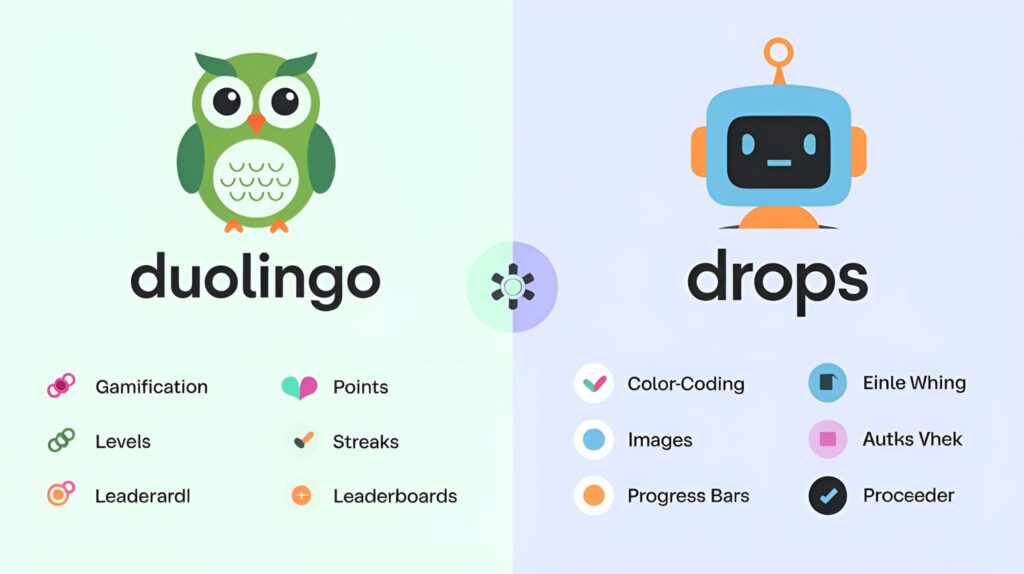
Duolingo’s gamification elements play a central role in its success, making language learning fun and engaging. With features like streaks, XP points, leaderboards, and achievement badges, Duolingo motivates users to keep learning by creating a competitive and rewarding environment. The app’s structure turns language acquisition into a game, encouraging daily practice and providing instant feedback. This makes Duolingo particularly appealing to beginners and casual learners who thrive on motivation through rewards and progress tracking.
In contrast, Drops focuses on visual learning techniques to enhance vocabulary retention. Through image-word associations, color coding, and interactive, bite-sized lessons, Drops ensures that learners remember words and phrases more easily. Its visual cues cater to those who are visual learners, making it ideal for quick vocabulary building. While Duolingo gamifies the entire process, Drops emphasizes efficient vocabulary memorization through engaging visuals.
Frequently Asked Question
Is Duolingo better than Drops?
Duolingo is better for beginners, while Drops excels in vocabulary with its visual, bite-sized lessons.
What is the #1 best language learning app?
The best app depends on your goals, but Duolingo is highly regarded for comprehensive, beginner-friendly learning.
Is there any better app than Duolingo?
While Duolingo is popular, other apps like Babbel and Memrise offer more in-depth lessons and varied features.
Does Drops teach you sentences?
Drops primarily focuses on vocabulary, not full sentences. It’s great for quick word-learning and building language skills.
Can you learn a language quickly with Duolingo?
Duolingo offers a structured approach, helping you build foundational skills quickly, but fluency requires consistent practice.
Does Drops work for advanced learners?
Drops is better suited for beginners or intermediate learners looking to expand vocabulary rather than mastering complex grammar.
How much does Duolingo cost?
Duolingo is free, but premium features like offline access and an ad-free experience are available with Duolingo Plus.
Is Duolingo effective for speaking skills?
Duolingo focuses more on reading and listening, with speaking practice included but not as comprehensive as conversation-based apps.
How many languages does Drops teach?
Drops offers over 40 languages, including popular options like Spanish, French, Japanese, and Korean.
Can you use Drops offline?
Yes, Drops offers offline access with a premium subscription, allowing you to continue learning without internet connection.
Conclusion
Both Drops and Duolingo have carved unique spaces in the world of language learning apps. While Duolingo offers a comprehensive, structured approach, making it ideal for learners of all levels, Drops excels in providing fast, visually engaging vocabulary lessons. If you’re looking to build a strong foundation in grammar and conversation, Duolingo is the way to go.
However, for those seeking to expand their vocabulary quickly, Drops is a powerful tool. Combining both apps can deliver the best results—Duolingo for structure and Drops for vocabulary mastery, maximizing language learning progress.
Visit For More Blog’s: brieghtsvision.com

Welcome to Brieghtsvision.Com!
Your one-stop place for tips and guides to get the most out of Duolingo. Make learning a new language easier with helpful content for learners of all levels.
